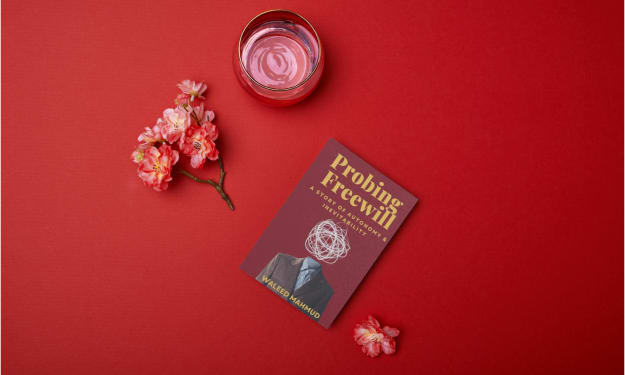Fatal Friendships: Betrayal and Murder Among Acquaintances
Discover the dark side of friendships in our blog on fatal friendships, exploring betrayal, murder, and how to recognize warning signs. #FriendshipsGoneWrong

Fatal Friendships: Betrayal and Murder Among Acquaintances
Introduction
In a world where friendships are cherished and valued, it's difficult to fathom the idea that some friendships can take a sinister turn, leading to betrayal and even murder. These deadly relationships, known as fatal friendships, are a chilling reminder of the dark side of human connections. In this article, we will explore the dynamics of fatal friendships, the signs to watch out for, and the devastating consequences they can have on individuals and communities.
Definition of Fatal Friendships
Before delving deeper into the subject, it's essential to define what exactly fatal friendships entail. Fatal friendships refer to interpersonal relationships where trust, loyalty, and companionship turn into treachery and violence, ultimately resulting in the death of one or more individuals involved. Unlike traditional friendships, which are based on mutual respect and support, fatal friendships are characterized by hidden motives, manipulation, and a disregard for human life.
Types of Fatal Friendships
Fatal friendships can manifest in various forms, each with its own set of dynamics and motivations. Some common types include:
The Envious Associate: This type of fatal friendship emerges when one person harbors intense envy or jealousy towards their acquaintance, eventually leading to destructive actions driven by resentment.
The Coercive Controller: In this scenario, one person exerts a manipulative control over their friend, gradually isolating them from other relationships and using emotional or psychological abuse to maintain dominance.
The Opportunistic Ally: This type of fatal friendship occurs when one person befriends another with the sole intention of exploiting their resources, such as financial or social connections, and when these manipulations escalate to fatal outcomes.
Signs and Red Flags
Identifying the warning signs of a potentially fatal friendship can be crucial for preventing tragic consequences. Some red flags to be aware of include:
Excessive possessiveness or control exhibited by one party
Frequent conflicts or displays of aggression
Isolation from other friends and family members
Intense jealousy or envy
Manipulative behavior or emotional abuse
Case Studies
To gain a deeper understanding of the complexities and consequences of fatal friendships, let's examine a few real-life case studies:
Case Study 1: The Betrayed Best Friend - Sarah and Emily were childhood friends who had been inseparable for years. However, Sarah's envy and resentment towards Emily's successes drove her to plot a heinous crime that ended in tragedy.
Case Study 2: The Charismatic Manipulator - Mark, a charismatic and charming individual, manipulated his friend John into committing a crime that resulted in both their downfalls. This case highlights the power of manipulation within a friendship.
Psychological Factors
To comprehend the psychological factors that contribute to fatal friendships, it's essential to explore the underlying motivations and mental states of those involved. Some key psychological aspects include:
Narcissistic tendencies
Borderline personality traits
Psychopathy or antisocial behavior
Delusions of grandeur
Low empathy and lack of remorse
The Role of Betrayal
Betrayal plays a significant role in fatal friendships, as it acts as a catalyst for escalating conflicts and potential violence. Betrayal can take many forms, including deception, infidelity, or acts of disloyalty. When trust is broken, it can lead to intense emotional responses and create a toxic environment that breeds resentment and revenge.
Escalation to Murder
Understanding how fatal friendships escalate to murder is crucial in comprehending the gravity of these relationships. It often involves a series of events that intensify conflicts and deepen the psychological motives of the individuals involved. Factors such as escalating violence, increased manipulation, and deteriorating mental health contribute to the progression towards lethal outcomes.
Motives and Triggers
The motives and triggers behind fatal friendships can vary significantly. Some common motives include financial gain, power, revenge, or a distorted sense of superiority. Triggers can range from perceived betrayals to a culmination of frustrations and resentments over time. Unraveling the intricate web of motives and triggers is crucial for understanding the dynamics of fatal friendships.
Preventing Fatal Friendships
While it may be challenging to anticipate every dangerous friendship, there are steps individuals can take to protect themselves:
Trust your instincts: If something feels off or uncomfortable in a friendship, pay attention to your gut feelings.
Establish boundaries: Clearly communicate and enforce your personal boundaries within relationships to maintain a healthy dynamic.
Seek support: Share your concerns with trusted friends, family members, or professionals who can provide guidance and support.
Legal Consequences
When a fatal friendship turns deadly, the legal repercussions can be severe. Depending on the jurisdiction and the circumstances surrounding the crime, individuals involved in fatal friendships may face charges such as murder, manslaughter, or conspiracy. Legal consequences serve as a deterrent and provide justice for the victims and their families.
Support and Resources
If you suspect someone you know is in a dangerous friendship or you find yourself in such a situation, there are resources available to provide assistance:
Reach out to local law enforcement or emergency services if you believe there is an immediate threat to someone's safety.
Seek support from organizations that specialize in domestic violence or crisis intervention.
Speak with a therapist or counselor who can offer guidance and help navigate the complexities of the situation.
Conclusion
Fatal friendships represent a dark and unsettling aspect of human relationships, where trust is shattered, and lives are tragically lost. By understanding the warning signs, psychological factors, and motives behind these relationships, we can work towards preventing and addressing such devastating outcomes. It is crucial to remain vigilant, prioritize healthy boundaries, and support those who may be trapped in dangerous friendships.
FAQs
FAQ 1: How common are fatal friendships?
Fatal friendships are relatively rare compared to more traditional forms of violence or crime. However, they do occur, and their impact can be profound on individuals and communities.
FAQ 2: What are some warning signs of a potentially fatal friendship?
Some warning signs include excessive possessiveness, frequent conflicts, isolation from other relationships, intense jealousy or envy, and manipulative behavior.
FAQ 3: Are fatal friendships more prevalent among certain age groups?
Fatal friendships can occur among people of any age group. However, specific factors, such as immaturity or vulnerability, may increase the likelihood of such relationships among younger individuals.
FAQ 4: How can someone protect themselves from becoming a victim of a fatal friendship?
Protecting oneself involves trusting instincts, establishing boundaries, seeking support, and being aware of the warning signs associated with potentially dangerous friendships.
FAQ 5: Where can I find support if I suspect someone I know is in a dangerous friendship?
Reach out to local law enforcement, crisis hotlines, or organizations specializing in domestic violence for guidance and support in such situations.
About the Creator
Ted Bundy
Welcome to our true crime blog, where we unravel mysteries, explore criminal minds, and share gripping narratives. Join us for captivating investigations and engage in thoughtful discussions on the pursuit of justice.
Enjoyed the story? Support the Creator.
Subscribe for free to receive all their stories in your feed. You could also pledge your support or give them a one-off tip, letting them know you appreciate their work.





Comments
There are no comments for this story
Be the first to respond and start the conversation.